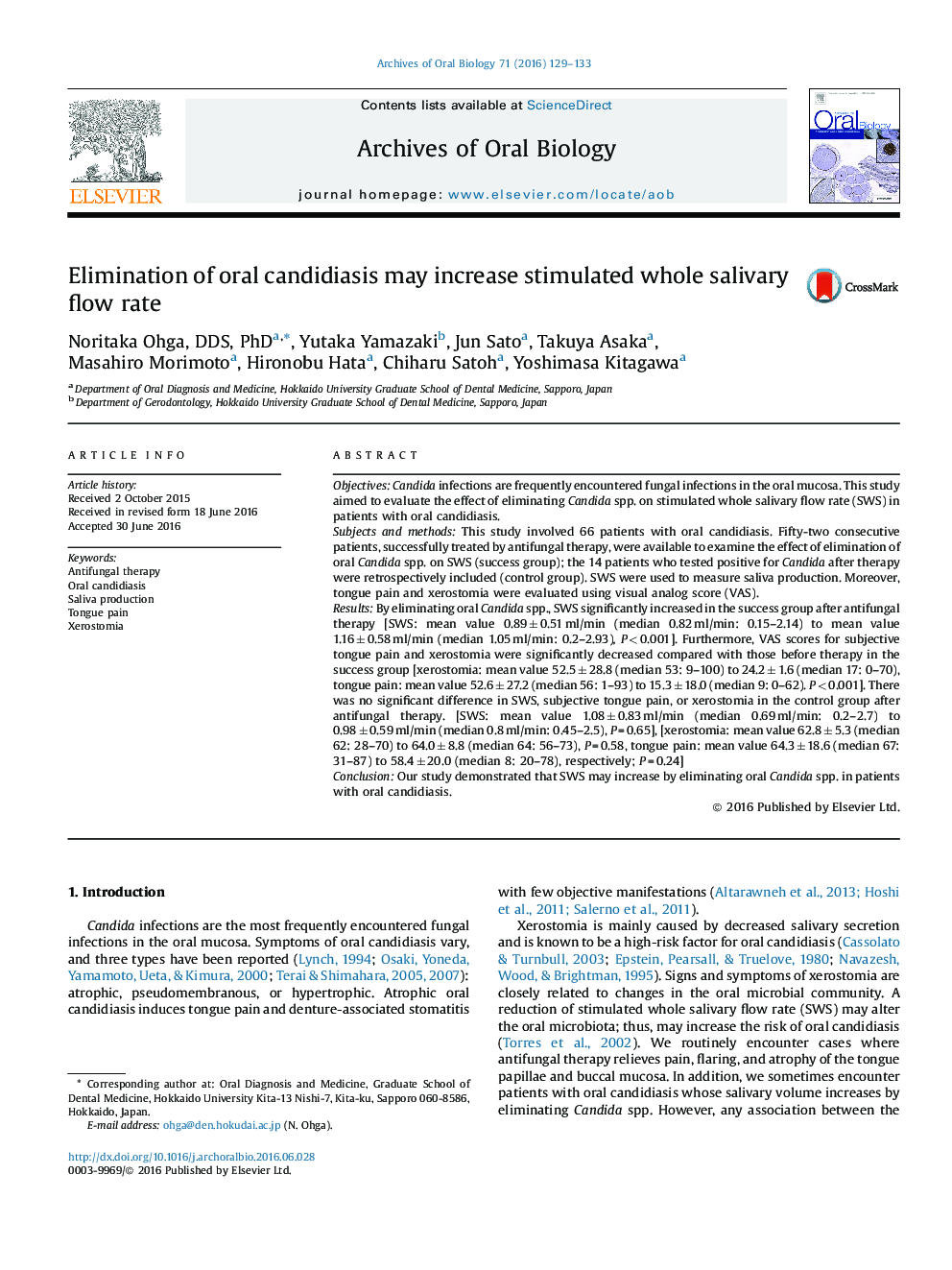| Article ID | Journal | Published Year | Pages | File Type |
|---|---|---|---|---|
| 3120577 | Archives of Oral Biology | 2016 | 5 Pages |
•We examine the effect of elimination of oral Candida spp. on stimulated whole salivary flow rate (SWS).•This study involved 66 patients with oral candidiasis. Fifty-two consecutive patients, successfully treated by antifungal therapy, were available (success group). Fourteen patients who tested positive for Candida after therapy were included in this study (control group).•By eliminating oral Candida spp., SWS significantly increased in the success group after antifungal therapy.•After elimination of oral candidiasis, decreased oral pain and xerostomia may lead to decreased sympathetic stimulation and increased salivary secretion.•Our study demonstrated that SWS may increase by eliminating oral Candida spp. in patients with oral candidiasis.
ObjectivesCandida infections are frequently encountered fungal infections in the oral mucosa. This study aimed to evaluate the effect of eliminating Candida spp. on stimulated whole salivary flow rate (SWS) in patients with oral candidiasis.Subjects and methodsThis study involved 66 patients with oral candidiasis. Fifty-two consecutive patients, successfully treated by antifungal therapy, were available to examine the effect of elimination of oral Candida spp. on SWS (success group); the 14 patients who tested positive for Candida after therapy were retrospectively included (control group). SWS were used to measure saliva production. Moreover, tongue pain and xerostomia were evaluated using visual analog score (VAS).ResultsBy eliminating oral Candida spp., SWS significantly increased in the success group after antifungal therapy [SWS: mean value 0.89 ± 0.51 ml/min (median 0.82 ml/min: 0.15–2.14) to mean value 1.16 ± 0.58 ml/min (median 1.05 ml/min: 0.2–2.93), P < 0.001]. Furthermore, VAS scores for subjective tongue pain and xerostomia were significantly decreased compared with those before therapy in the success group [xerostomia: mean value 52.5 ± 28.8 (median 53: 9–100) to 24.2 ± 1.6 (median 17: 0–70), tongue pain: mean value 52.6 ± 27.2 (median 56: 1–93) to 15.3 ± 18.0 (median 9: 0–62). P < 0.001]. There was no significant difference in SWS, subjective tongue pain, or xerostomia in the control group after antifungal therapy. [SWS: mean value 1.08 ± 0.83 ml/min (median 0.69 ml/min: 0.2–2.7) to 0.98 ± 0.59 ml/min (median 0.8 ml/min: 0.45–2.5), P = 0.65], [xerostomia: mean value 62.8 ± 5.3 (median 62: 28–70) to 64.0 ± 8.8 (median 64: 56–73), P = 0.58, tongue pain: mean value 64.3 ± 18.6 (median 67: 31–87) to 58.4 ± 20.0 (median 8: 20–78), respectively; P = 0.24]ConclusionOur study demonstrated that SWS may increase by eliminating oral Candida spp. in patients with oral candidiasis.
